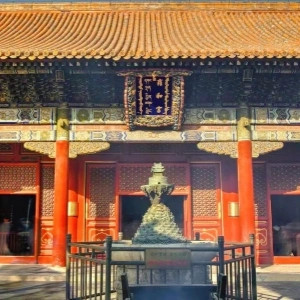Gansu, a province located in northwestern China, attracts countless tourists with its rich natural beauty and deep historical and cultural heritage. The following are the top ten attractions in Gansu, which have their own unique characteristics and are worth visiting.
1. Dunhuang Mogao Caves
Introduction: Mogao Grottoes in Dunhuang, commonly known as the “Cave of a Thousand Buddhas”, is one of the four major grottoes in China, and is the world's largest, longest-lasting, richest, and best-preserved treasure trove of Buddhist and grotto art.
Features: The Mogao Caves contain a large number of murals and sculptures, showing the brilliant achievements of ancient Buddhist art.
2. Jiayuguan
Introduction: Jiayuguan, a World Heritage Site and a national 5A tourist attraction, is located 5 kilometers west of Jiayuguan City in Gansu Province.
Characteristics: Jiayuguan Pass consists of inner city, outer city, Luo Cheng, urn city, city trench and the Great Wall of the north and south flanks, with a total length of about 60 kilometers, it is the first pass of the western end of the Ming Dynasty Great Wall, and is also the main transportation hub of the ancient “Silk Road”.
3. Zhangye Colorful Danxia
Introduction: Zhangye Seven-color Danxia is the most typical Danxia landforms developed in the arid areas of northern China, and the only composite area of Danxia landforms and colorful hills in China.
Characteristics: The scenic area is full of colors and peculiar landforms, which is known as “nature's palette”.
4. Mingsha Mountain Crescent Spring
Introduction: Mingsha Mountain Crescent Springs is located 5 kilometers south of Dunhuang City, sand springs coexist, wonderful creation of heavenly, ancient and modern to “desert wonders” known in the world.
Characteristics: Mingsha Mountain mountain from the accumulation of quicksand, quicksand down the steep sand slopes accompanied by chirping; Crescent Spring is embraced by the Mingsha Mountain, curved like a crescent moon, lying in the four sides of the yellow sand surrounded by crystal clear water, thousands of years not to dry up.
5. Tianshui Maijishan Grottoes
Introduction: Maijishan Grottoes is one of the four major grottoes in China, with 194 existing caves, more than 7,200 clay and stone statues, and more than 1,300 square meters of murals.
Characteristics: The Maiji Mountain Grottoes is famous for its clay sculpture art, which is known as the “Oriental Sculpture Art Museum”.
6. Kongdong Mountain
Introduction: Kongdong Mountain is famous for Taoism and is the first mountain of Taoism, taking its name from the Taoist meaning of “empty cave and pure nature”. Characteristics: The mountain is majestic and verdant, with more than 40 attractions such as strange peaks, unusual caves, strange rocks, flowing clouds, Taoist temples and Zen monasteries.
7. Guange Gou
Introduction: Guange Gou is located in the outskirts of Tanchang County, Longnan City, Gansu Province, and consists of core tour areas such as Ganguan Zhu Gou, Goose Man Gou, Mulong Gou, and Leigushan.
Characteristics: It combines forest landscape, grassland landscape, geomorphological landscape, water landscape, celestial landscape and other natural and humanistic landscapes, and has a beautiful ecological environment.
8. Lanzhou White Pagoda Mountain Park
Introduction: White Pagoda Mountain Park, named after a white pagoda temple on the hill, is an important tourist attraction in Lanzhou.
Characteristics: Climbing to the top of the White Pagoda Hill, you can overlook the cityscape of Lanzhou and feel the prosperity and tranquility of the city.
9. Labrang Temple
Introduction: Labrang Monastery is one of the six patriarchal monasteries of the Gelug sect, second in size only to the Potala Palace, and is the world's largest Tibetan academic institution.
Characteristics: The monastery is brilliant and colorful, and is the largest Tibetan religious and cultural center in the Gansu, Qinghai and Sichuan regions.
10. Zagana
Brief introduction: Zhagana is located in Gansu Province, Gannan Tibetan Autonomous Prefecture, Dibei County, more than 30 kilometers northwest of the Yihua Township territory, the Tibetan language means “stone box”.
Characteristics: This place is located in a basin surrounded by mountains, surrounded by stone walls towering into the clouds, like a stone castle. Hillside village built on the mountain, patchwork, showing a unique Tibetan flavor.
These ten attractions not only represent the natural scenery and historical and cultural heritage of Gansu, but also the wonderful places that tourists can't miss when they come to Gansu. Whether you are exploring the remains of ancient civilization or enjoying nature's ingenious works, Gansu can meet your expectations.
If you have any questions or would like to customize your trip, please contact us! Popular Tour Packages in Gansu:
Related Posts
Create Your Customized Trip
Take about 2 minutes to fill the form to tell us how you like to travel, and get a reply within 1 working day.









